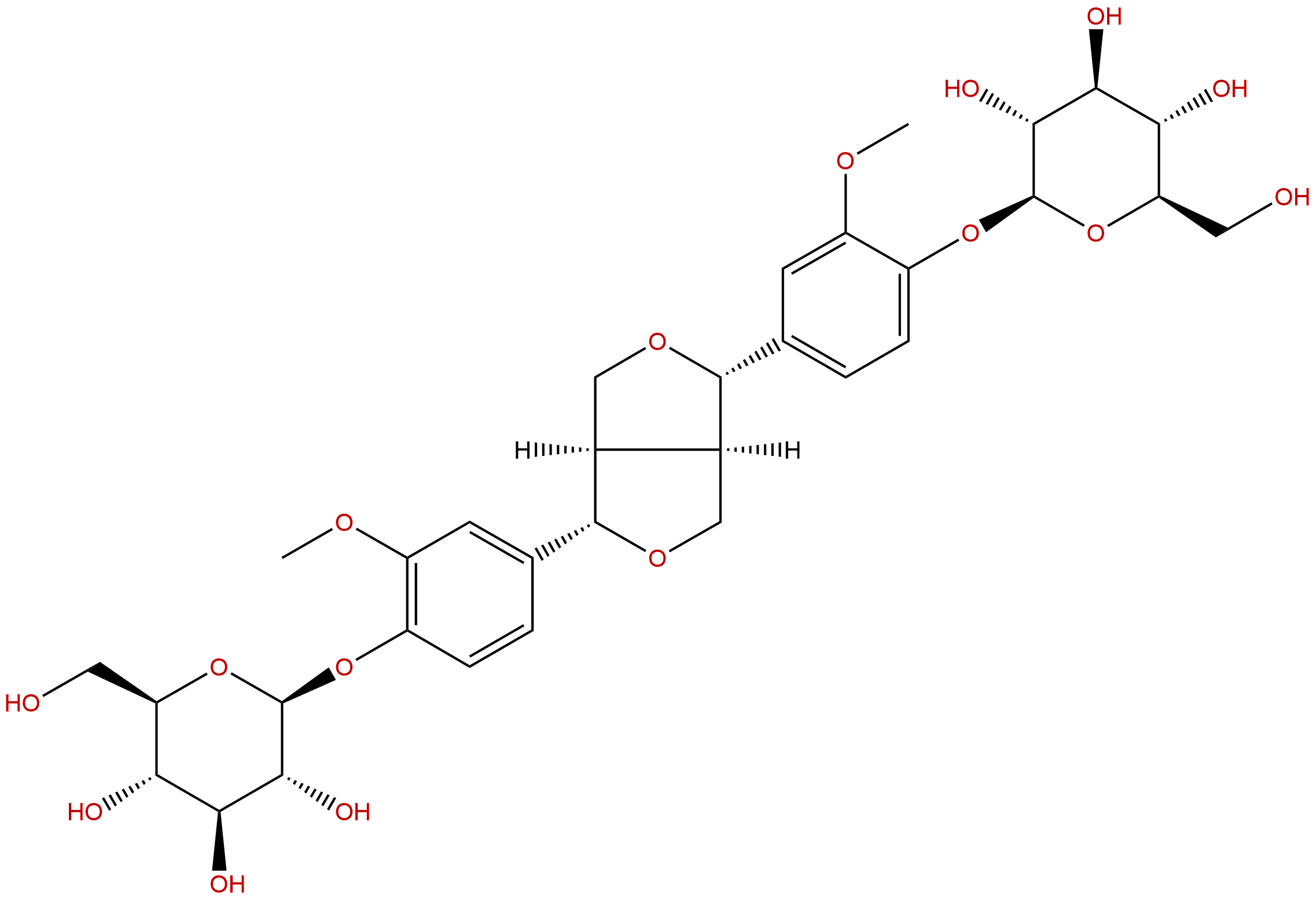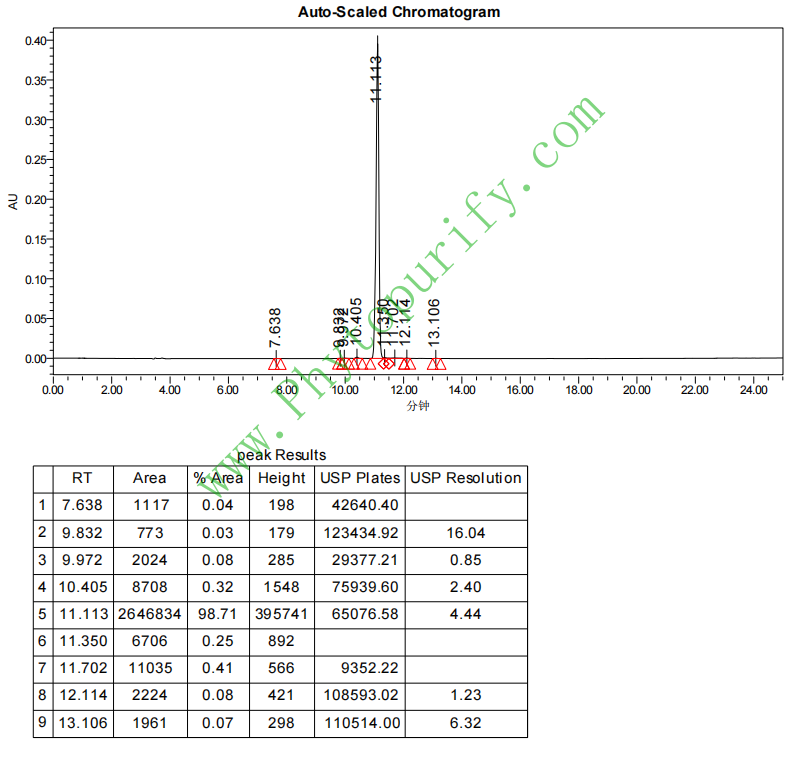
Pinoresinol diglucosideCAS No.:63902-38-5
|
||||||||||
 |
|
|
||||||||

| Catalogue No.: | BP1108 |
| Formula: | C32H42O16 |
| Mol Weight: | 682.672 |
Synonym name:
Catalogue No.: BP1108
Cas No.: 63902-38-5
Formula: C32H42O16
Mol Weight: 682.672
Botanical Source: the bark of Eucommia ulmoides
Purity: 95%~99%
Analysis Method: HPLC-DAD or/and HPLC-ELSD
Identification Method: Mass, NMR
Packing: Brown vial or HDPE plastic bottle
Can be supplied from milligrams to grams.
For Reference Standard and R&D, Not for Human Use Directly.
Inquire for bulk scale.
Description:
Pinoresinol diglucoside is a putative α-glucosidase inhibiting compound, has antihypertensive activity. It is a heat shock factor 1 inducer, increased expression of HSF1 by a factor of 1.041 at 3 μM.
References:
Chem Biodivers. 2013 Jul;10(7):1322-7.
Heat shock factor 1 inducers from the bark of Eucommia ulmoides as cytoprotective agents.
The barks of Eucommia ulmoides (Eucommiae Cortex, Eucommiaceae) have been used as a traditional medicine in Korea, Japan, and China to treat hypertension, reinforce the muscles and bones, and recover the damaged liver and kidney functions.
METHODS AND RESULTS:
Among these traditional uses, to establish the recovery effects on the damaged organs on the basis of phytochemistry, the barks of E. ulmoides have been investigated to afford three known phenolic compounds, coniferaldehyde glucoside (1), bartsioside (2), and feretoside (3), which were found in the family Eucommiaceae for the first time. The compounds 1-3 were evaluated for their inducible activities on the heat shock factor 1 (HSF1), and heat shock proteins (HSPs) 27 and 70, along with four compounds, geniposide (4), geniposidic acid (5), Pinoresinol diglucoside (6), and liriodendrin (7), which were previously reported from E. ulmoides. Compounds 1-7 increased expression of HSF1 by a factor of 1.214, 1.144, 1.153, 1.114, 1.159, 1.041, and 1.167 at 3 μM, respectively.
CONCLUSIONS:
Coniferaldehyde glucoside (1) showed the most effective increase of HSF1 and induced successive expressions of HSP27 and HSP70 in a dose-dependent manner without cellular cytotoxicity, suggesting a possible application as a HSP inducer to act as cytoprotective agent.
HPLC of Pinoresinol diglucoside
